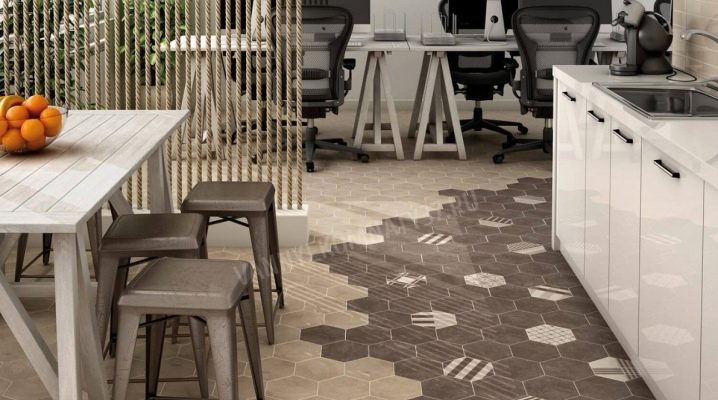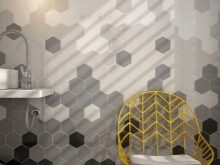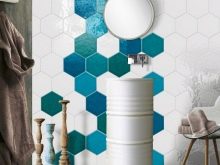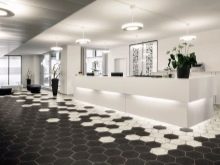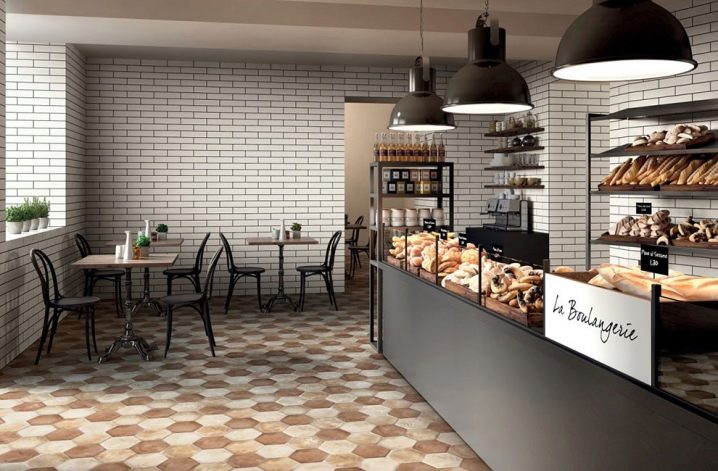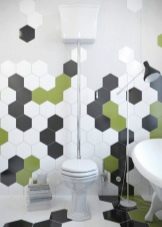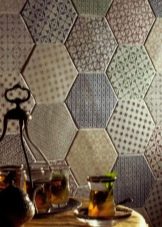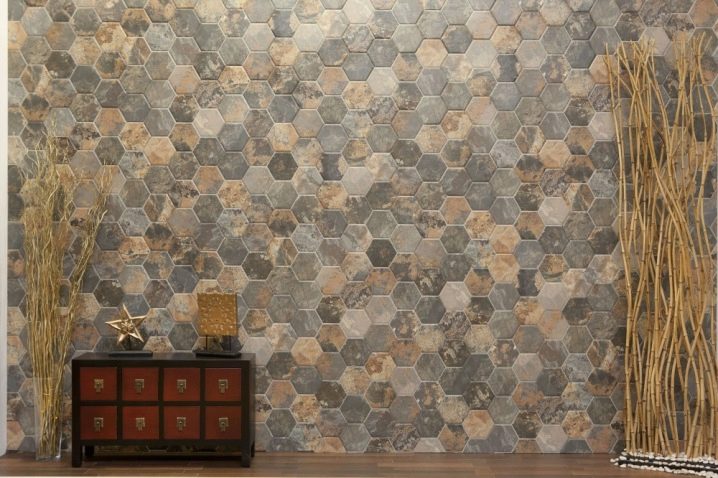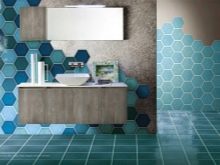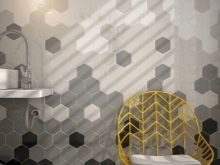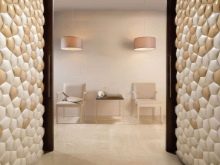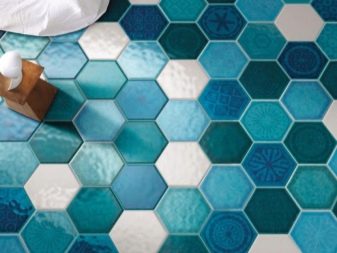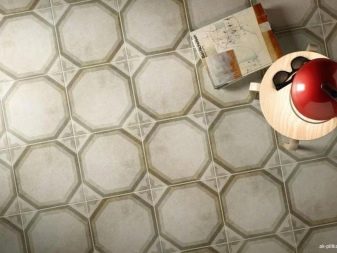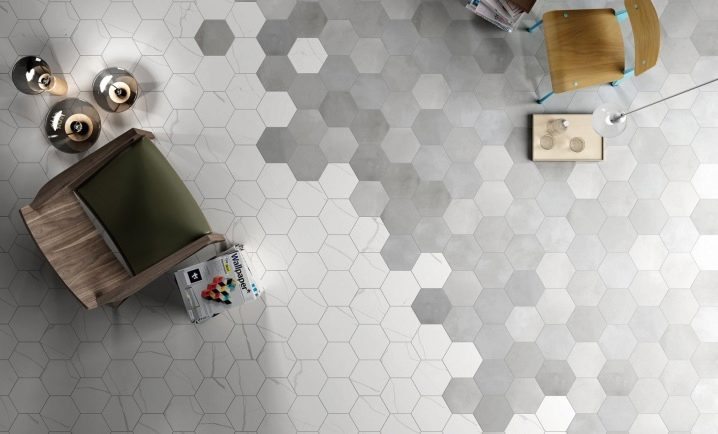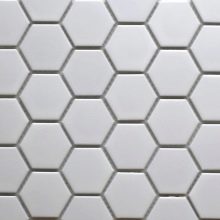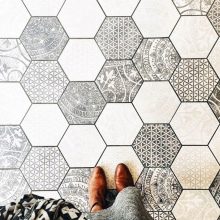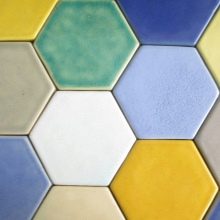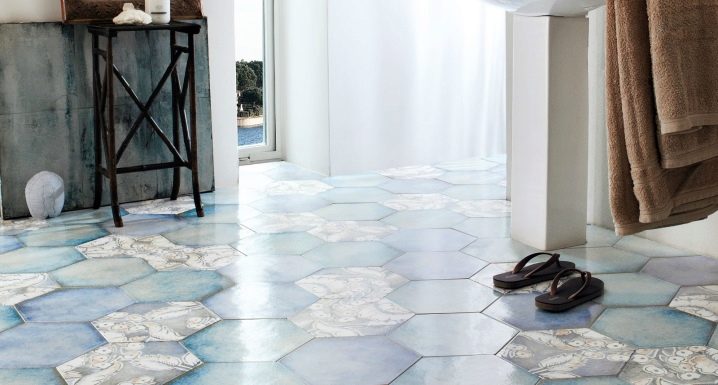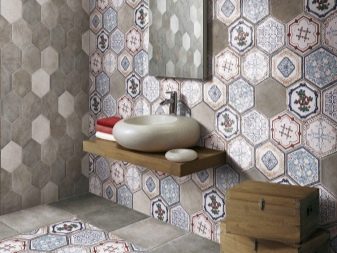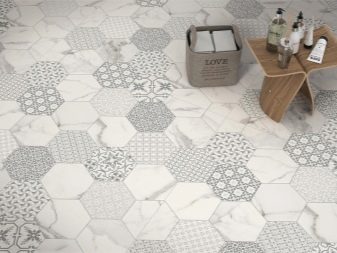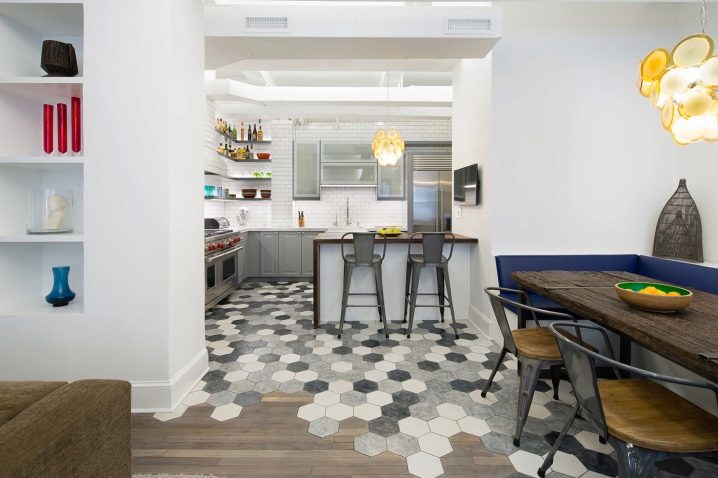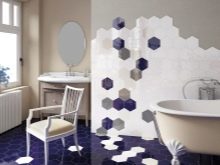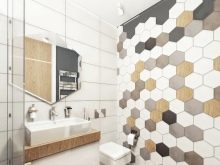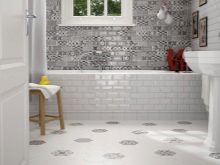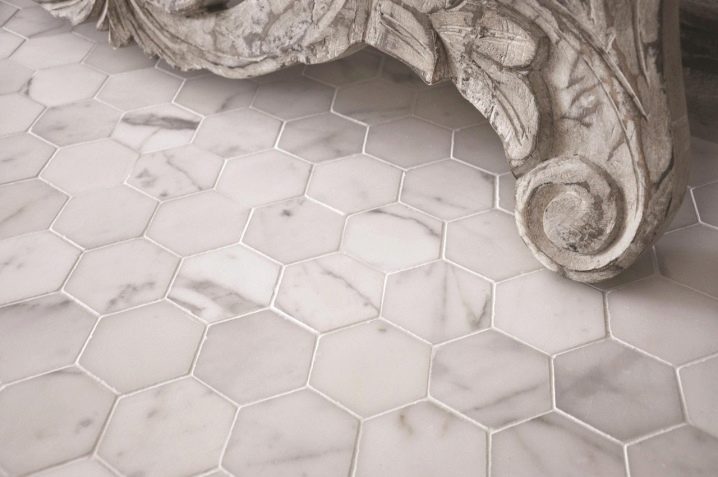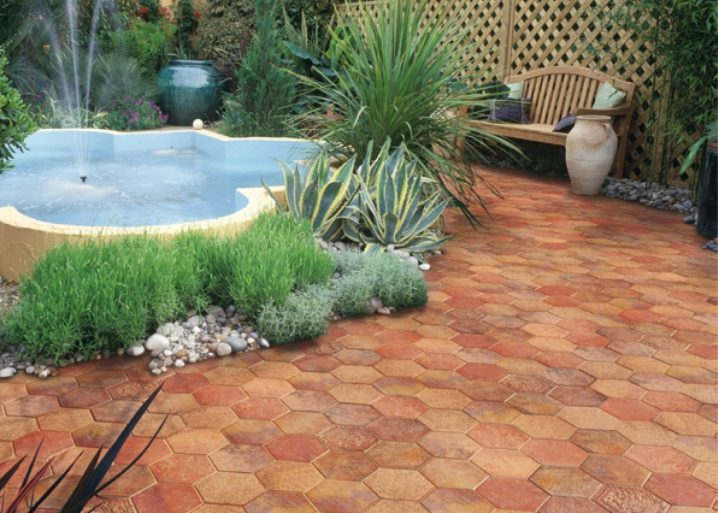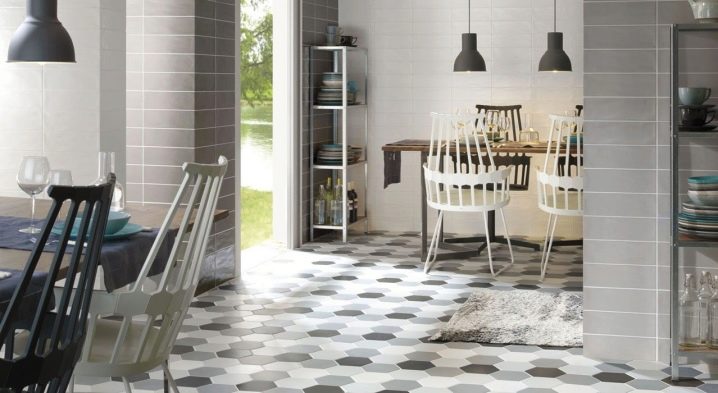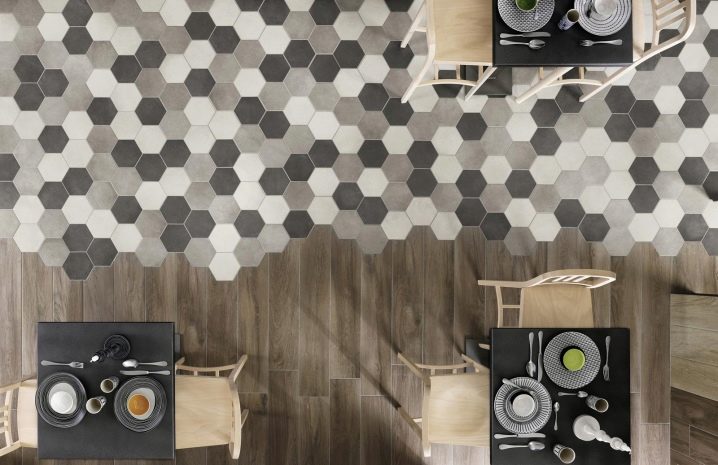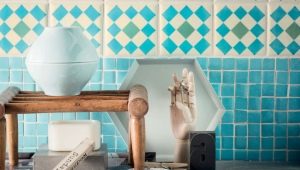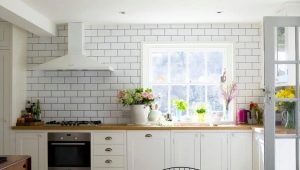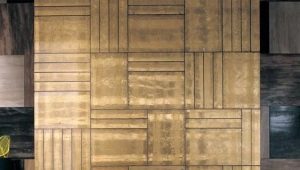“Honeycomb” tiles: variations and applications
The popularity of hexagonal hexagon tiles right now on the edge of interior fashion. The original form pressed the traditional square ceramic tiles. "Honeycomb" love to use and professional interior designers, and the usual owners of apartments and houses. Finishing is perfect for designing absolutely any objects - from swimming pools, bedrooms, cafes to train stations and large industrial buildings. Everywhere a hexagon looks appropriate, spectacular, original, instantly attracting a look to oneself.
Special features
Making tiles "honeycomb" is no different from the manufacture of a ceramic tile, except for the form, of course. Its thickness varies in the range of 5-14 mm and depends on where the layout is planned. The higher the permeability of the room where the hex will flaunt, the thicker it should be.For example, in a cafe on the floor should be a tile with a thickness of at least 7-8 mm, otherwise its durability and strength, together with an attractive appearance, will be quickly lost. At airports, large shopping centers - from 10 mm.
Hexagonal tile advantages:
- unusual shape;
- the ability to divide space into zones;
- versatility - is used to design the floor in any room (and even outside it), both as a wall and as a floor cladding;
- wide selection of colors and textures of hexagons;
- a huge number of options calculations;
- excellent technical characteristics, such as wear and moisture resistance, impact resistance, fire resistance, durability;
- resistance to temperature extremes.
Of course, this material has some minuses:
- complexity of installation compared to square tiles;
- a large amount of waste when laying, and as a result, the need to acquire material with a fair amount of stock;
- high price in comparison with traditional ceramics.
Types and texture
The non-standard shape of the tile and the diversity of its textures, as well as their combinatoriness, make it possible to make the interior in a good design and difficult.And since basically “honeycombs” are made of porcelain stoneware, the space of the room will also be functional, easy to maintain.
You can also classify hexagons by texture (depending on the surface):
- Glossy - with a smooth and shiny surface. This effect is achieved by coating with a special glaze. Caution should be applied to such tiles in the floor covering, since it is very easy to slip on it.
- Matte finish - completely non-slip, porous, with a complete lack of gloss. If the layout is done in the bathroom, it is better to stop the choice on the tile produced by pressing. In such “comb” there are fewer pores, they are denser, respectively, less able to penetrate moisture.
- Relief. The surface can be both with gloss, and without, but always - with embossed patterns. Glossy tiles of this kind are less slippery, they can be laid on the floor.
In addition to these, manufacturers produce such types of tiles as polished and semi-polished. How are they different? Polished hexagons are smoother, “glass”, but less durable, since the top layer is removed during the polishing process.Semi-polished tiles are differently called lappatirovanny, it is slightly less shiny, but more durable, because its polishing is not too intense.
Laminated "honeycomb" also exist. Their surface can imitate marble, and parquet, and metal, and wood, and even leather.
However, compared to ceramic granite, this tile is not as durable, although no less attractive. Therefore, it is undesirable to lay it out where people have a high permeability of people (cafes, train stations, open areas), it quickly loses its properties.
The texture of hexagons can be very different:
- concrete;
- asphalt;
- prints of cast-iron manholes for water flow;
- increased weaving;
- brick;
- marble;
- tree, and more.
Dimensions of “honeycombs” in modern collections of manufacturers can be small, like mosaic elements, or huge - the width of a face is up to 0.5 m. A hexagon does not necessarily happen to have the same faces - there are elongated shapes, asymmetrical.
Tile "honeycomb" in the interior
The variety of textures - from "marbled" to artificially aged, vintage - allows hexagons to fit seamlessly into almost any interior.You can often find the opinion that hexagons look good only in monochrome colors, but, like everywhere, it all depends on many factors.
For example, in a room with a white ceiling and walls, bright monophonic furniture, the colored floor made of hexagons looks original, unbent and modern.
Or, on the contrary, in the room with hexagons lay one wall, leaving the rest of the vertical surfaces and the floor monotonous, perhaps even different shades of the same color.
This technique is often used in cafes and coffee houses, but it can also be used in the corresponding interior in a spacious room.
Or take the patchwork technique. The motley "patchwork" floor will attract attention, despite the fact that the walls and the ceiling are in monochrome. The furniture in this version in terms of colors echoes the "flaps" of the floor. Such a composition can look very cozy and fresh.
As a rule, hexagons of the same size, texture and thickness are produced within the same collection, while having a different pattern. This allows the layout to create a unique "carpet" that can revive the interior by combining disparate solutions of interior objects.For people who are inclined to creative experiments, this technique can help create a truly unique room design.
The versatility of 6 coal tiles is one of its main advantages. If you need to arrange a room in such styles as loft, Mediterranean, neoclassical or minimalism - the choice is perfect.
"Honeycomb" will not allow minimalism to slip into boredom and monotony, and the loft will add a bit of comfort and warmth, smoothing out the emphasized urbanistic accents.
The straight shape of the hexagon will perfectly complement the Mediterranean style with its lack of sharp corners, freshness and natural colors. Neoclassicism will give a little more modernity and nobility, for example, if it is a glazed tile of marbled porcelain on the floor.
Artificially aged woodgrain tiles or terracotta allow it to decorate not only rooms, but also patios, terraces or open areas. Such receptions are often used in restaurants or private houses near the pool. There are also special “honeycombs” for the street - also with different textures - from wood to asphalt.
Unique collections of tiles in several sizes, shades and surfaces allow you to create real mosaic panels on the walls and on the floor.It can be strips from a mosaic on a monochromatic background or a patterned section of the wall, smoothly flowing into the same color or “shadow” area on the floor. Despite the relatively recent general interest in the “honeycomb”, there are a lot of design solutions with the participation of this beautiful and functional tile.
Manufacturers
A few years ago, the ceramic hexagonal tile was very off-budget, now it is not. It is still more expensive than its rectangular counterparts, but not at times.
If we talk about manufacturers, the leading ones, of course, are Italy and Spain (Baldocer, Impronita, Kerama Marrazzi, Ragno Bistrot other).
Polish company Ceramika gres It also occupied its niche in the ceramics market, producing hexagons with an original design, using digital equipment to create them. And for example, the firm NS Mosaic from Southeast Asia produces tiles of porcelain and porcelain, suitable for facing both premises and pools. Products of all listed companies (and many others) can be bought in our country.
Domestic manufacturer of hexagon represented by Italon (Russia). Due to the quality, style of execution, a huge choice and affordable prices, the brand’s products can withstand competition with leading manufacturers of ceramic tiles.Italon has a trump card - porcelain stoneware products have the lowest moisture absorption level, which makes it universal.
Buying Tips
With the existing wealth of choice of hexagons, making a choice is not easy. But taking into account a number of tips, make it easier. So:
- The general rule is as follows: the larger the area that is planned to be laid out with tiles, the wider the edge the module should have. And vice versa.
- It is categorically not recommended to buy “end-to-end” hexagons, you need a large stock. When layouts, many elements are trimmed in corners and seams; trimming is not reused.
- To accurately determine the number of tiles that will be required, you need to carry out a preliminary layout. This will help to more accurately calculate the required number of modules.
How to make a kitchen apron from a six-sided tile, look in the following video.
